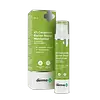What's inside
What's inside
 Key Ingredients
Key Ingredients

 Benefits
Benefits

 Concerns
Concerns

 Ingredients Side-by-side
Ingredients Side-by-side

Water
Skin ConditioningEthylhexyl Salicylate
UV AbsorberDimethicone
EmollientPEG-10 Glyceryl Stearate
EmulsifyingHomosalate
Skin ConditioningC12-15 Alkyl Benzoate
AntimicrobialGlycerin
HumectantPolyhydroxystearic Acid
EmulsifyingDisodium Acetyl Glucosamine Phosphate
Skin ConditioningMethylene Bis-Benzotriazolyl Tetramethylbutylphenol
UV FilterSilica
AbrasiveC13-14 Isoparaffin
EmollientCaprylhydroxamic Acid
C20-22 Alkyl Phosphate
EmulsifyingNiacinamide
SmoothingBis-Ethylhexyloxyphenol Methoxyphenyl Triazine
Skin ConditioningCamellia Sinensis Leaf Extract
AntimicrobialCentella Asiatica Extract
CleansingCaesalpinia Spinosa Gum
Skin ConditioningBHT
AntioxidantCitric Acid
BufferingWater, Ethylhexyl Salicylate, Dimethicone, PEG-10 Glyceryl Stearate, Homosalate, C12-15 Alkyl Benzoate, Glycerin, Polyhydroxystearic Acid, Disodium Acetyl Glucosamine Phosphate, Methylene Bis-Benzotriazolyl Tetramethylbutylphenol, Silica, C13-14 Isoparaffin, Caprylhydroxamic Acid, C20-22 Alkyl Phosphate, Niacinamide, Bis-Ethylhexyloxyphenol Methoxyphenyl Triazine, Camellia Sinensis Leaf Extract, Centella Asiatica Extract, Caesalpinia Spinosa Gum, BHT, Citric Acid
Water
Skin ConditioningCeramide EOP
Skin ConditioningCeramide Ns
Skin ConditioningCeramide NP
Skin ConditioningCeramide As
Skin ConditioningCeramide AP
Skin ConditioningCaprylic/Capric Triglyceride
MaskingNiacinamide
SmoothingXylitol
HumectantGlucose
HumectantAnhydroxylitol
HumectantPhoenix Dactylifera Seed Extract
MoisturisingSodium Acrylates Copolymer
Lecithin
EmollientPropylene Glycol
HumectantPolyglycerin-3
HumectantGlyceryl Stearate
EmollientXylitylglucoside
HumectantDimethicone
EmollientPhenoxyethanol
PreservativeEthylhexylglycerin
Skin ConditioningShea Butter Glycerides
EmulsifyingCetearyl Olivate
Sorbitan Olivate
EmulsifyingSodium Benzoate
MaskingStearic Acid
CleansingAcrylates/C10-30 Alkyl Acrylate Crosspolymer
Emulsion StabilisingDisodium EDTA
Sodium Hydroxide
BufferingHyaluronic Acid
HumectantGlycerin
HumectantLigustrum Lucidum Seed Extract
Skin ConditioningFucus Vesiculosus Extract
EmollientButylene Glycol
Humectant1,2-Hexanediol
Skin ConditioningTocopheryl Acetate
AntioxidantWater, Ceramide EOP, Ceramide Ns, Ceramide NP, Ceramide As, Ceramide AP, Caprylic/Capric Triglyceride, Niacinamide, Xylitol, Glucose, Anhydroxylitol, Phoenix Dactylifera Seed Extract, Sodium Acrylates Copolymer, Lecithin, Propylene Glycol, Polyglycerin-3, Glyceryl Stearate, Xylitylglucoside, Dimethicone, Phenoxyethanol, Ethylhexylglycerin, Shea Butter Glycerides, Cetearyl Olivate, Sorbitan Olivate, Sodium Benzoate, Stearic Acid, Acrylates/C10-30 Alkyl Acrylate Crosspolymer, Disodium EDTA, Sodium Hydroxide, Hyaluronic Acid, Glycerin, Ligustrum Lucidum Seed Extract, Fucus Vesiculosus Extract, Butylene Glycol, 1,2-Hexanediol, Tocopheryl Acetate
Ingredients Explained
These ingredients are found in both products.
Ingredients higher up in an ingredient list are typically present in a larger amount.
Dimethicone is a type of synthetic silicone created from natural materials such as quartz.
What it does:
Dimethicone comes in different viscosities:
Depending on the viscosity, dimethicone has different properties.
Ingredients lists don't always show which type is used, so we recommend reaching out to the brand if you have questions about the viscosity.
This ingredient is unlikely to cause irritation because it does not get absorbed into skin. However, people with silicone allergies should be careful about using this ingredient.
Note: Dimethicone may contribute to pilling. This is because it is not oil or water soluble, so pilling may occur when layered with products. When mixed with heavy oils in a formula, the outcome is also quite greasy.
Learn more about DimethiconeGlycerin is already naturally found in your skin. It helps moisturize and protect your skin.
A study from 2016 found glycerin to be more effective as a humectant than AHAs and hyaluronic acid.
As a humectant, it helps the skin stay hydrated by pulling moisture to your skin. The low molecular weight of glycerin allows it to pull moisture into the deeper layers of your skin.
Hydrated skin improves your skin barrier; Your skin barrier helps protect against irritants and bacteria.
Glycerin has also been found to have antimicrobial and antiviral properties. Due to these properties, glycerin is often used in wound and burn treatments.
In cosmetics, glycerin is usually derived from plants such as soybean or palm. However, it can also be sourced from animals, such as tallow or animal fat.
This ingredient is organic, colorless, odorless, and non-toxic.
Glycerin is the name for this ingredient in American English. British English uses Glycerol/Glycerine.
Learn more about GlycerinNiacinamide is a multitasking form of vitamin B3 that strengthens the skin barrier, reduces pores and dark spots, regulates oil, and improves signs of aging.
And the best part? It's gentle and well-tolerated by most skin types, including sensitive and reactive skin.
You might have heard of "niacin flush", or the reddening of skin that causes itchiness. Niacinamide has not been found to cause this.
In very rare cases, some individuals may not be able to tolerate niacinamide at all or experience an allergic reaction to it.
If you are experiencing flaking, irritation, and dryness with this ingredient, be sure to double check all your products as this ingredient can be found in all categories of skincare.
When incorporating niacinamide into your routine, look out for concentration amounts. Typically, 5% niacinamide provides benefits such as fading dark spots. However, if you have sensitive skin, it is better to begin with a smaller concentration.
When you apply niacinamide to your skin, your body converts it into nicotinamide adenine dinucleotide (NAD). NAD is an essential coenzyme that is already found in your cells as "fuel" and powers countless biological processes.
In your skin, NAD helps repair cell damage, produce new healthy cells, support collagen production, strengthen the skin barrier, and fight environmental stressors (like UV and pollution).
Our natural NAD levels start to decline with age, leading to slower skin repair, visible aging, and a weaker skin barrier. By providing your skin niacinamide, you're recharging your skin's NAD levels. This leads to stronger, healthier, and younger looking skin.
Another name for vitamin B3 is nicotinamide. This vitamin is water-soluble and our bodies don't store it. We obtain Vitamin B3 from either food or skincare. Meat, fish, wheat, yeast, and leafy greens contain vitamin B3.
The type of niacinamide used in skincare is synthetically created.
Learn more about NiacinamideWater. It's the most common cosmetic ingredient of all. You'll usually see it at the top of ingredient lists, meaning that it makes up the largest part of the product.
So why is it so popular? Water most often acts as a solvent - this means that it helps dissolve other ingredients into the formulation.
You'll also recognize water as that liquid we all need to stay alive. If you see this, drink a glass of water. Stay hydrated!
Learn more about Water